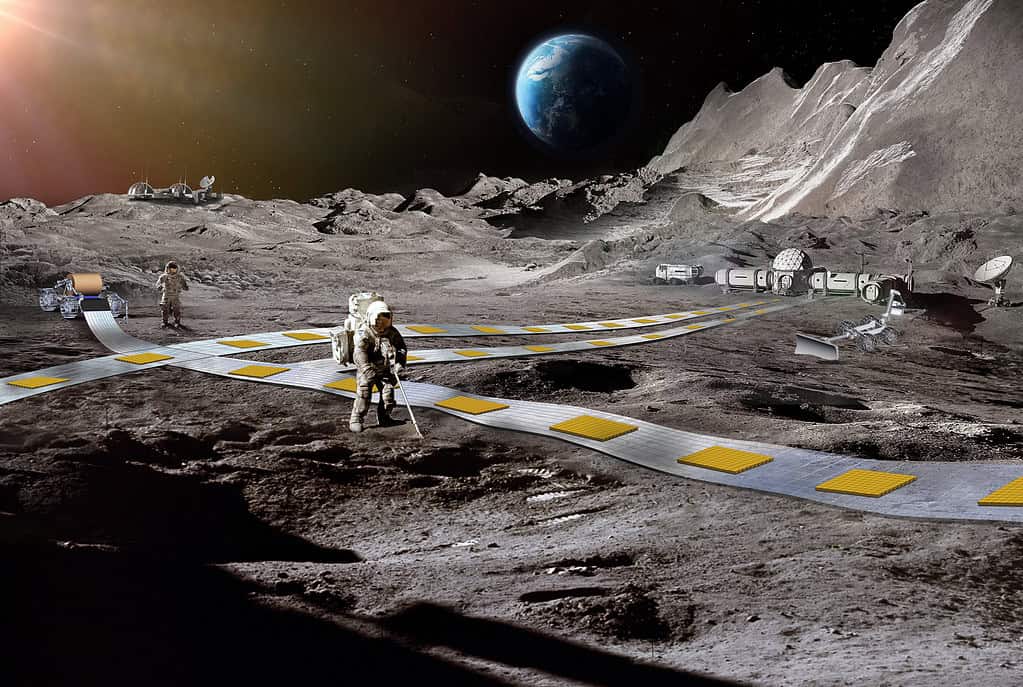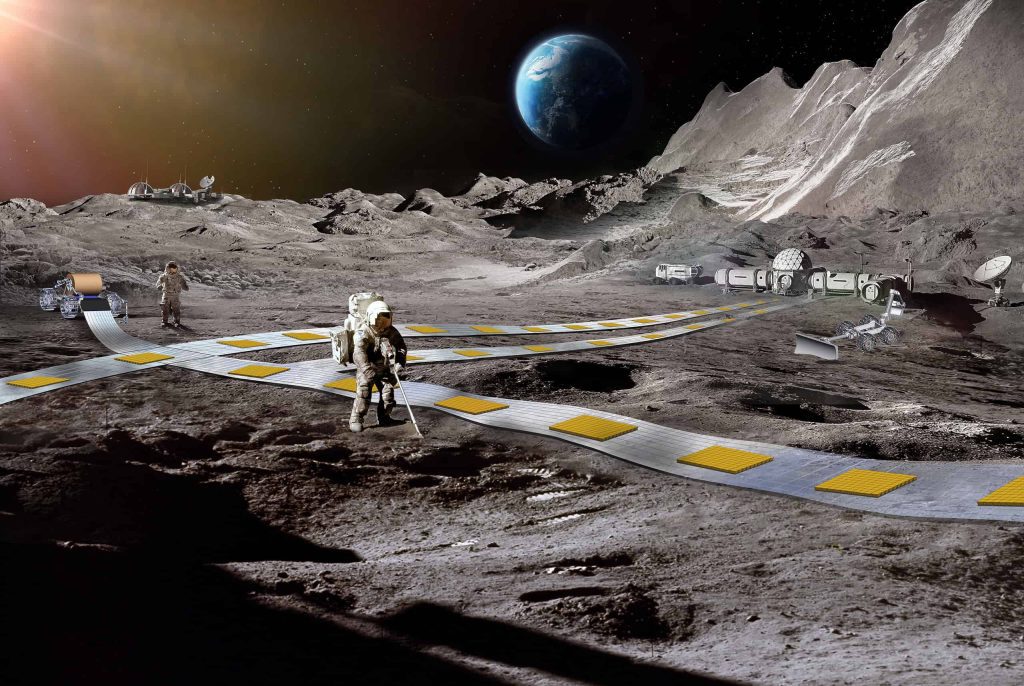
With all the discussion about commercial companies in space, it’s easy to forget just how much innovative research NASA is conducting. It’s not all about space travel and telescopes, also. Some of the research aims to support other space operations — like a base on the moon, for example.
To build a base on the moon, one of the first things you need is a payload transport system. If you’re bringing materials from Earth, you need to be able to transport them on site. For this, NASA envisions an autonomous, magnetic railway system. Based on current plans, the system could be available as soon as the 2030s.
A rail system on the Moon
A lunar railway system, a fluid-based telescope, and a solar sail with quantum sensors: these are just some of the projects being pursued as part of ‘NASA’s Innovative Advanced Concepts ‘(NIAC) program. The program aims to nurture and support visionary projects that can revolutionize space exploration. NASA has selected six concept studies for additional research and development, and one of them is FLOAT.
FLOAT, or Flexible Levitation on a Track, aims to use magnetic robots that levitate over a flexible film track. The project is led by Ethan Schaler from NASA’s Jet Propulsion Laboratory in Southern California.
The film consists of a graphite layer that allows robots to float passively via diamagnetic levitation, a flex-circuit layer that creates electromagnetic thrust for controlled movement along the tracks, and an optional solar panel layer that produces power for the base station when exposed to sunlight.
Unlike robots that use wheels, legs, or tracks, FLOAT robots would have no moving parts and levitate above the track. Therefore, they would reduce abrasion and wear from lunar dust. This makes FLOAT significantly more efficient than conventional rail systems for lunar applications.
NASA’s getting serious about the moon base
FLOAT has two main applications: to transport payloads to and from the lunar base and to transport regolith (lunar soil and rocks) that the base would mine itself.
According to the envisioned project, individual robots will be able to transport payloads of up to 100 tons per day, at speeds of over 2 km/h (1.2 mph). For lunar setups this is an effective speed. It also won’t require much preparation to set up and could be basically rolled or moved depending on the mission requirements. Even in the rugged lunar environment, it should be robust enough for the base’s needs.
This flexibility and autonomy is particularly important for NASA, which is getting more and more serious about its lunar base, especially with the Artemis program.
Artemis will mark NASA’s return to crewed lunar exploration for the first time since the Apollo program ended in the 1970s. The ambitious initiative will not only return people to the moon, but also establish a sustainable presence there. In addition to scientific experiments, the base is expected to serve as a a stone used to move to the next place for other journeys in the solar system, specifically intended for Mars.
according to Michael D. Griffin, a former NASA Administrator:
“The goal isn’t just scientific exploration. . . It’s also about extending the range of human habitat out from Earth into the solar system as we go forward in time. . . In the long run a single-planet species will not survive. . . If we humans want to survive for hundreds of thousands or millions of years, we must ultimately populate other planets.”
It’s still a bit far away
The plan has completed Phase 1 and will now advance to Phase 2, which is still an early stage. NASA will provide $600,000 for it. During this stage, scientists will examine how environmental elements (like temperature, radiation, and soil pollution) affect system performance and durability.
By the end of this stage, the scientists hope to have a functional model on Earth under moon-like conditions. If all goes well, it should be ready in around ten years.
However, FLOAT is not the exclusive recipient of this funding from NASA.
A fascinating future lies ahead
The Fluidic Telescope (FLUTE) project, for instance, seeks an innovative method for building large optical observatories in space. Led by Edward Balaban at NASA’s Ames Research Center, FLUTE aims to use fluidic shaping of ionic liquids to create large, adaptable optics. This technique enables the production of expansive and flexible telescopic lenses that can be modified or reshaped while in orbit, overcoming the constraints of conventional rigid materials.
Meanwhile, the ScienceCraft initiative, overseen by Mahmooda Sultana at NASA’s Goddard Space Flight Center, introduces a new use of Quantum Dot technology in space exploration. This project places sensors based on Quantum dots across the surface of a solar sail, turning the sail into an innovative imaging device. Tiny semiconductor particles that can absorb and emit light at different frequencies, and their deployment across a solar sail allows the entire structure to function as a large, lightweight imager. This design leverages quantum physics to facilitate scientific measurements across vast distances. This would give us increased capability to conduct detailed observations without the need for heavy, traditional spacecraft equipment. Ultimately, NASA’s futuristic projects are thriving.
“These diverse, futuristic concepts signify an outstanding group of Phase II studies,” noted John Nelson, NIAC program executive at NASA Headquarters in Washington. “Our NIAC fellows never cease to astonish and motivate, and this group certainly provides NASA with numerous possibilities to consider in terms of future potential.”
You can learn more about the six projects selected for
2024 NIAC Phase II here
This is just one of the “sci-fi” projects NASA is currently working on. 2024 NIAC Phase II here.









